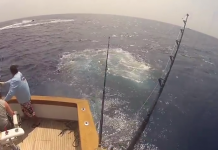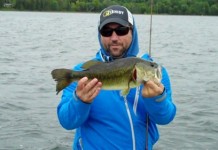Part three of our Fishidy bucket list blog focuses on salmon/trout, saltwater species and an exotic fishing trip (get your mind out of the gutter, not that kind of exotic). And, we’re still collecting your votes for your favorite bucket list blog. Vote for Jordan or Brian and then share your own Fishing Bucket List Adventure with us on our contest tab on Facebook.
Salmon/Trout
Jordan – Lake Michigan, WI (Salmon)
When Brian and I were chatting about the places we’re interested in fishing for salmon and trout, Lake Michigan was my first pick. Now I must admit, I live about 20 minutes from this incredible fishing destination, and I have only been on the lake once. That’s actually a lie because I did fish it once, but as far as I am concerned we didn’t know what the heck we were doing so it doesn’t count. Plus, the black flies were so bad I barely even touched a pole, and we certainty didn’t catch a fish. I’ve been talking up the possibility of going out with someone who actually knows what they’re doing for years, but I still haven’t done it. Well, now that I have it written on my bucket list, I’ll have to get it checked off the list this summer.
Ever since I’ve been in the tournament fishing scene I don’t think I’ve been able to appreciate the fight that a fish can demonstrate. Big bass can pull, pike can run and peel drag, but very few fish can do both and make a fight last more than a few minutes like a big salmon or trout can.
The beautiful scene on the great lakes, whether it’s Erie, Michigan, or any of the others, is that of serenity. Nothing but water in every direction once you drive out a few miles. Lake Michigan is the 3rd largest of the Great Lakes and the 6th largest inland lake in the entire world. Its shoreline supports a diversely wealthy population of habitats such as sand dunes, marshes, prairies, savannas and forests. Each of its salmon, trout, walleye and smallmouth fisheries are world class. This is most definitely a fishery that could be included on most of the categories I have listed thus far.
Brian – Kenai River, AK (King Salmon)
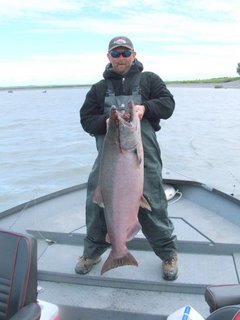
A few years back I was lucky enough to visit Alaska, the trip was amazing! Alaska’s scenery, wildlife, and vastness are unlike any place in the world. I was able to partake in some fishing while I was there but not my bucket list entry, the Kenai River for world-class salmon. The Kenai is the most popular fishing destination in Alaska, particularly for king or chinook salmon. Each year there are two runs for king salmon, plus other runs of different salmon variety. The world record king salmon, which weighed about 97 lb, was caught in the Kenai River in 1985. The Kenai is also the home of trophy size rainbow trout and Dolly Varden. Kenai is known for its large fish. A typical king in the second run, beginning in mid-July, weighs 40–85 pounds with considerably larger specimens not uncommon.
According to AlaskanAdventure.com, “Back trolling a Jet-planer with Kwikfish, Flatfish, Magnum Wiggle Worts, Tadpollys, Spin-n-Glos, and salmon egg clusters is an effective method. Casting a Kenai Special with a single hook or casting and bouncing large spoons such as the Pixie Spoon off the bottom rocks is a successful tactic, as is casting #6 Vibrax upstream and reeling in as the lure bounces off the rocks. Fly fishermen using attractor flies like the Coho or Alaskabou have had their share of hook ups. Bank fishermen beware, no matter what Kenai water you’re fishing, be prepared to run when you hook that king salmon!”
These tips aside, the best thing to do when travelling to fish the Kenai is book an experienced guide as your likelihood of catching a trophy will increase dramatically. Don’t forget, fishing during the summer means endless sunlight, so there is no reason to leave the water!
Saltwater Species
Jordan – Florida Keys (Snook)
The Florida record for the common snook (there are 4 types of Snook) is over 44 pounds! The world record is an astounding 53 pounds 10 ounces! These monsters are what most anglers target, but all sizes of snook put up intense fights and are fun to catch. I’m not typically interested in saltwater fishing, but I’ve been intrigued by this type of fishing because it reminds me of fishing back home. Trolling motor down, fishing structure and a fish with enough pull to make a fight last more than a few seconds. Sounds good to me!
The “saltwater pike” is the name many Midwestern anglers give the snook. Known for its fight and how difficult it can be to catch one, the snook is one of the most sought after game fish in the state of Florida. The population of Florida snook has been depleted the last few years so there are very strict limits and enforcements. A separate, $2, fishing license is necessary, slot limits, and a daily bag of 2 between 24-34 inches are in place. They aren’t allowed for sale in the state of Florida, so there isn’t commercial fishing. There are also separate seasons for snook. You can’t fish for snook in the months of June, July or August and then again in the slot of December 1st through the 31st of January. The strict enforcement of these laws has definitely helped the populations come back from where they were 7-10 years ago.
Snook are usually found in waters ranging from the 70s to the mid-80s, and aren’t too commonly found in the northern Florida areas. Early morning and dusk are key times — especially when there’s a full moon they tend to bite better. Tackle needed for snook are as follows: spinning gear, 8-10# line with 30# leader, live bait such as shrimp, shiners, pinfish, or mullet, and a strong hook set!
Brian – Cape Verde (Blue Marlin)
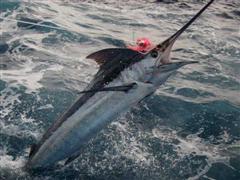
This entry could have easily been my selection for the exotic fishing trip, but instead it landed as my saltwater species trip. I knew I wanted blue marlin, as Wikipedia accurately states, “Blue Marlin fishing is considered by some game fishermen to be the pinnacle of offshore game fishing, due to the size and power of marlin and the relative rareness and vulnerability of this species.” The question just became where? Blue marlin can be caught all over the world in both major oceans including, Baja Mexico, Brazil, Canary Islands, Bahamas, even in the U.S. I chose Cape Verde, because, well, half the fun of fishing is the journey of getting there, and the time spent out of the boat after a long day of fishing.
The Republic of Cape Verde is an island country, spanning an archipelago of 10 islands located in the central Atlantic Ocean, 500 miles off the coast of Western Africa. This trip would definitely be “off the map”. The country just opened its first internal airport! Cape Verde was listed as a “top five international blue marlin destination” by Marlin Magazine. Captain Peter Wright wrote, “I’ve had more blue marlin bites in a single day here than anywhere else I’ve ever fished. While fishing on Duyfken in 1997 with my sole angler, John Phillips, we lost count of the number of blues we raised. We estimated that between 35 and 50 different blue marlin struck our lures that day!” Cape Verde also has plenty of opportunity for a “grander”.
Blue marlin range in size from 50 pounds all the way up to the world record of 1,850 pounds! Blue marlin may be caught year-round in Cape Verde waters but the very best fishing seems to take place between March and May when large numbers of blue marlin concentrate in island waters. Blues encountered off Cape Verde range widely in size with many fish of 100 to 350 lb and good numbers of larger fish in the 400 to 600+ lb class. The biggest catch from Cape Verde waters is a 1241 lb caught in September 2006. Trolling is the way to catch marlins, artificial bait or live bait at 8 to 17 mph is the ticket.
Exotic Fishing Trip
Jordan – Amazon River (Peacock Bass)
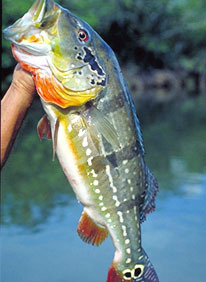
To be completely honest, this might be the number one pick on my bucket list. The weather, the exotic species and the scenery of South America were enough to entice me at a young age to visit the Amazon and go fishing. Plus, most folks take a houseboat down the river and have friends and family come along. My fondest memories of fishing have always been those trips with my dad, grandpa, uncles and family friends. It makes everything that much more special when the person netting your fish is a life-long fishin’ buddy! The ability to share the moment and the catch together is absolutely priceless.
The main target on this trip would surely be the many species of peacock bass. Many people don’t realize there are a variety of peacock bass that come in different sizes and colors. They are traditionally caught on massive balsa-wood top water plugs, and these can be in a variety of sizes, colors, shapes and actions (propellers, poppers, walk-the-dogs, etc.). Most of your big Musky top water baits will work perfectly for this too. These fish blow up on bait like nothing I have ever seen before! It’s a legitimate explosion, and then get ready to set the hook hard and hold on for your life because these fish pack some power into their fight.
Most anglers catch a huge array of different species since there are tons of types in the river. Many are prehistoric looking and have adapted to the standard of living over thousands of years. The peacock bass has got to be one of the top predators and will be one of the strongest and most exciting fish due to the top water action. In the past few seasons of fishing I’ve been honing my top water abilities, and I believe this would be a true test of my abilities if I had the chance to go head-to-head with these beasts!
Brian – Christmas Island (Bonefish)
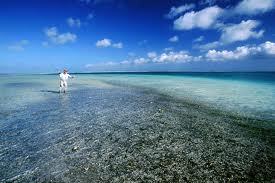
I’m not a huge fly fisherman. I really appreciate the art of fly fishing and the fun of actually getting a strike on a fly, I prefer chucking large spinner baits with a bait caster. However, I would ditch musky fishing any day of the week for a trip to fly fish the flats of Christmas Island. Kiritimati or Christmas Island is a Pacific Ocean raised coral island in the northern Line Islands, and part of the Republic of Kiribati.
The island has the greatest land area of any coral island in the world: about 124 sq mi; its lagoon is about the same size. The island is located about 1,200 miles south of Hawaii at 1 degree latitude and is sparsely populated. A fellow angler, and Fishidy co-founder, once told me he had the opportunity to fish there many years ago, and the native residents asked him repeatedly if he knew John Wayne, as old John Wayne movies were their only exposure to American culture. I’m sure times have changed — especially with the rapid expansion of technology. However Christmas Island is still off the grid.
Bonefish are not the biggest fish, but they are strong and fast! The fish range from 4 to 6 pounds and swim up to 20 miles per hour. Streamers, poppers, and various other flies work well and 10 – 30 fish days are the norm. One of the main reasons I desperately want to fish Christmas islands aside from the bonefish fight and the remoteness of the location, is the style of fishing. Walking around all day on sand flats in warm tropical knee deep water casting flies, doesn’t sound too shabby and it wouldn’t get old as there are thousands of flats to fish from.
—————
This concludes our three-part bucket list blog series. We hoped you enjoyed it and hope it made you think of some of your once-in-a-lifetime fishing destinations. Please let us know if you’ve had the luxury to fish any of our bucket list experiences or let us know some of your desired trips on Facebook. And don’t forget to vote on whose bucket list you liked the best!
Dreaming of fishing….now that’s Fishidy!

